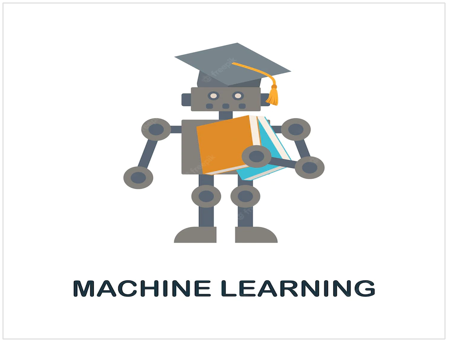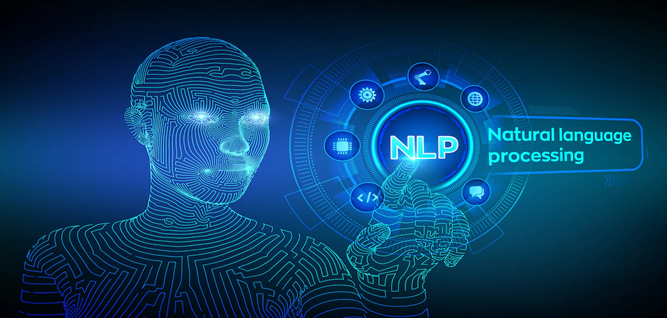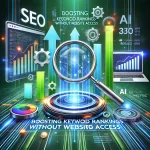
Introduction:
Artificial intelligence (AI) is a branch of computer science that deals with the creation of intelligent machines that can work and react like humans. AI research deals with the question of how to create computers that are capable of intelligent behaviour.
What is Artificial Intelligence?
Artificial Intelligence (AI) is a field of computer science and engineering focused on the creation of intelligent agents, which are systems that can reason, learn, and act autonomously. AI research deals with the question of how to create computers that are capable of intelligent behaviour.
In practical terms, AI applications can be deployed in a wide range of areas, including search, natural language processing, robotics, and machine learning. However, if you’re unsure of how to use new technologies to grow your business profitably and you want to scale it with emerging technology, then Incrementors Sacramento AI marketing strategies can assist you in enhancing your company’s online presence in order to grow your business and attract customers.
The History of AI:
The history of AI is intimately bound up with the history of computing itself. Early attempts at artificial intelligence were based on the idea that computers could be used to perform simple tasks that would otherwise require human intelligence, such as solving mathematical problems or playing chess.
However, it was not until the 1950s that AI really began to take off as a field of research. This was largely due to the work of British mathematician Alan Turing, who showed that computers could be used to simulate human intelligence. This led to the development of the first true AI programs, which were designed to carry out specific tasks such as solving mathematical problems or playing chess.
In the 1960s and 1970s, AI research continued to grow in popularity and many new approaches were developed, including expert systems, neural networks, and artificial life. However, AI also began to face criticism from some quarters, who argued that the field was overhyped and that its promises had not been delivered.
The 1980s and 1990s saw a renewed interest in AI, thanks in part to the increasing power of computer hardware. This allowed researchers to develop more sophisticated AI programs and deploy them in a wide range of areas such as medicine, finance, and manufacturing. In addition, AI began to be used more widely in commercial applications such as customer service and Recommendation Systems.
The 21st century has seen a continued expansion in the use of AI technologies, with applications now deployed in areas as diverse as autonomous vehicles, smart homes, and military drones. With the rapid expansion of AI capabilities, there is growing concern about its impact on society and the economy. There are also ethical concerns about the increasing use of AI in decision-making processes.
Applications of AI:
Artificial intelligence has been used in a variety of fields, including medical diagnosis, stock trading, robot control, law, and many more. More recently, AI is being used more and more in the field of education.
There are many potential applications of AI in education. For example, AI could be used to help create personalized learning experiences for students. AI could also be used to create digital tutors that can provide one-on-one help to students. Additionally, AI could be used to develop adaptive testing systems that can adjust the difficulty of a test based on the individual student’s performance.

The use of AI in education has the potential to revolutionize the field. With AI, we can move beyond the one-size-fits-all approach to education and start tailoring learning experiences to the individual needs of each student.
Today, artificial intelligence is being used in a variety of different ways, with new applications being found all the time. Some examples include:
- Automated customer service: Companies such as Amazon and Apple are using AI-powered chatbots to handle customer inquiries and provide support. These chatbots can understand natural language and provide helpful responses to customer queries.
- Marketing and advertising: AI is being used for website SEO and content marketing for users on websites and social media platforms such as Facebook and Instagram. By understanding user behaviour and preferences, AI can serve up personalized content that is more likely to be relevant and interesting to individual users.
- Fraud detection: Banks and financial institutions are using AI to detect fraudulent activities such as money laundering and credit card fraud. By analysing large data sets for patterns of behaviour, AI can identify suspicious activity and flag it for further investigation.
- Predictive maintenance: Companies are using AI to monitor equipment for signs of wear and tear or potential failure. By catching problems early, predictive maintenance can help companies avoid costly downtime and repairs.
AI technologies are being used in a growing number of areas including:
Autonomous vehicles: AI is being used to develop self-driving cars and trucks. This technology is still in its early stages but it has the potential to transform transportation by making it safer and more efficient.
Smart homes: AI-enabled devices are being used to automate tasks such as turning off lights and adjusting thermostats. This technology can improve energy efficiency and make life easier for users.
Robotics: Industrial robots have long been used in manufacturing but they are now becoming increasingly common in other sectors such as healthcare and agriculture. Robotics technology is being used to develop assistive devices for people with disabilities and robotic surgery systems.
Military drones: Unmanned aerial vehicles (UAVs) equipped with AI technology are being used by militaries for reconnaissance, surveillance, and target acquisition purposes. This technology raises ethical concerns about its use in warfare.
Types of Artificial Intelligence:

There are four main types of Artificial Intelligence (AI), each with its own strengths and weaknesses.
- Reactive AI is the simplest form of AI, and only really has the ability to react to its environment. It can’t form memories or make plans and is mainly used for simple tasks like playing chess or Go.
- Limited Memory AI can remember and use past experiences to make decisions in the present. This type of AI is often used for more complex tasks like facial recognition or autonomous driving.
- Theory of Mind AI is able to understand the thoughts, feelings, and intentions of other people. This type of AI is still in development but has potential applications in areas like healthcare and customer service.
- General AI is the most advanced form of AI and is capable of human-like thought processes. This type of AI is still in development but has the potential to eventually surpass human intelligence.
Machine Learning:
Machine learning is a subset of artificial intelligence that deals with the creation of algorithms that learn from data. Machine learning algorithms are used in a variety of applications, such as email filtering and computer vision.
Machine learning is a rapidly growing field with many exciting applications. However, machine learning is also a complex field, and there are a number of important issues to consider when using machine learning algorithms. In this section, we will briefly discuss some of the key issues in machine learning.

One of the key issues in machine learning is over fitting. Over fitting occurs when a model has been trained too closely on the training data and does not generalize well to new data. This can lead to poor performance on test data or in real-world settings. To avoid over fitting, it is important to use methods such as cross-validation and regularization.
Another important issue in machine learning is class imbalance. Class imbalance occurs when one type (such as positive examples) is much more common than another class (such as negative examples). This can be a problem for some machine learning algorithms, which may learn to simply label all examples as belonging to the more common class. To address the class imbalance, it is often necessary to use specialized methods such as oversampling or weighting.
Finally, another issue that is important to consider when using machine learning is feature selection. Feature selection is the process of choosing which input features (variables) to use when training a model. This can be a difficult task, as there may be hundreds or even thousands of potential features to choose from. Additionally, different features may have different importance for different tasks or datasets. There are a number of methods for feature selection, including manual selection, automatic selection, and feature engineering.
Natural Language Processing:
Natural language processing (NLP) is a field of computer science and artificial intelligence concerned with the interactions between computers and human (natural) languages, in particular how to program computers to process and analyze large amounts of natural language data.
NLP technologies are used in many different areas, including machine translation, natural language generation, dialogue systems, information retrieval, text mining and sentiment analysis.

The history of NLP dates back to the 1950s when a number of researchers started investigating ways to get computers to automatically understand and generate natural language text. One of the earliest examples was ELIZA, a program developed by Joseph Weizenbaum in 1966 that could mimic human conversation.
In the 1970s and 1980s, a number of researchers developed methods for statistical machine translation, which allowed for more accurate translations by taking the context of the text into account.
In the 1990s, there was a renewed interest in NLP with the rise of the World Wide Web and the explosion of online textual data. This led to new methods for information extraction and text mining.
Today, NLP is an active area of research with many different applications. The future of NLP looks promising, with continued advances in machine learning and artificial intelligence likely to lead to even more powerful NLP tools and applications.
Robotics:
Types of AI in Robotics is a broad term that means different things to different people. To some, it means the use of artificial intelligence (AI) in robots to make them more human-like. To others, it refers to any technology that uses AI or machine learning for automation tasks. For example, self-driving cars and drones are both considered types of robotics because they use AI and machine learning to automate their actions.
If you’re looking for a definition that includes all these technologies as well as other types of robotics such as robotic surgery or surgical robots, then check out this article on Types of Robotics by Robotics.
The Future of Artificial Intelligence –

- AI will become more human-like. As AI technology gets more sophisticated, it will become increasingly difficult to tell the difference between a human and a machine. This is especially true as AI begins to learn and understand emotion.
- AI will take on more jobs. As AI technology advances, it will likely replace humans in many jobs. This could lead to large-scale unemployment, as well as a fundamental shift in the way we live and work.
- AI will create new industries and business opportunities. As AI technology develops, it will create entirely new industries and business models. We can’t even imagine what these might look like right now, but they have the potential to be transformational.
- AI will amplify existing societal trends. Just as AI is amplifying existing trends in business and society today, it will continue to do so in the future. This could include everything from the rise of the gig economy to the increasing importance of data privacy.
- AI will have a profound impact on humanity. As AI technology continues to evolve, it will have a profound impact on humanity as a whole. This could be both positive and negative, depending on how we choose to use it.
Conclusion:
Artificial intelligence is a rapidly evolving field with a long history and a bright future. It has the potential to revolutionize many industries and change the way we live, work, and play. There are many different types of AI, each with its own strengths and weaknesses. The most promising applications of AI are in areas such as healthcare, finance, transportation, and manufacturing. However, AI also has the potential to cause harm if it is not used responsibly. The future of AI is shrouded in potential but also in uncertainty. We must be careful to ensure that AI is used for good and not for evil. Only time will tell what the future holds for artificial intelligence.
Contact us for website promotion, website designing and development services by visiting our website.
Want to Submit Guest Post Send Mail Now!
Recent Post
How to Boost Keywords Ranking Without Website
- February 18, 2025
- 5 min read
How to share Google My Business Access
- February 12, 2025
- 1 min read
How Businesses Can Use Technology to Optimize
- February 4, 2025
- 7 min read
AI-Enhanced Insights and Analytics in SharePoint Development
- October 18, 2024
- 6 min read
SEO Best Practices for Content Marketing and
- October 18, 2024
- 9 min read









